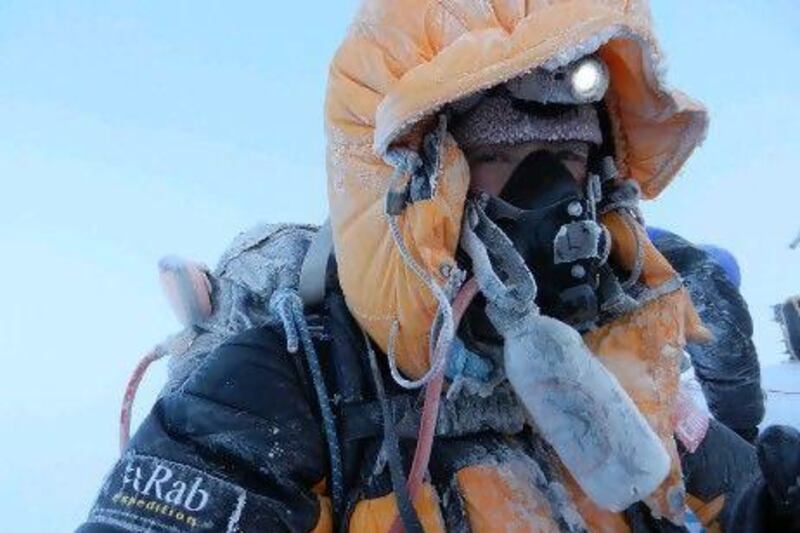DUBAI // A Dubai resident has spoken of her horror at having to climb past the bodies of other mountaineers on one of Everest's deadliest weekends.
Leanne Shuttleworth last week became the youngest British woman to reach the top of the highest mountains on seven continents.
Having celebrated her 19th birthday on May 4 at 7,200 metres, Leanne reached the 8,848-metre summit of Everest on May 20.
The weekend was one of the busiest on Everest in years, with more than 170 climbers trying to reach the summit on one day, despite temperatures of below minus 50°C and 80kph winds.
"We made the decision at base camp before the push to summit," says Leanne, who made the ascent with her father Mark. "Everyone wanted to summit on [May] the 19th. We chose the day after."
The rush caused havoc on the narrow, treacherous path to the top, with huge queues of climbers waiting for their turn to make the summit.
The consequences were disastrous as climbers' air supplies began to run out. Stuck for hours without moving, frostbite set in.
Many turned back, giving up on their dream in order to stay alive. But four people died on the 19th.
Since then, the number has risen to 11, making it the deadliest season on the mountain since 1996, when 15 people perished.
And with no way for anyone to take the dead off the mountain their bodies stayed there, frozen and still clipped to the lines.
"I was sobbing on the way up," says Leanne. "You'd see the people and think of their friends and family, and because you're going up in the dark your mind starts playing tricks on you.
"I was counting the hours to sunrise, which was even delayed because of the bad weather. I passed one couple on the way who were dying. They were too far gone.
"We offered sherpas and oxygen. Our lead guy stopped and helped everyone. They were so far gone they wouldn't take the assistance."
Three of their group of eight turned back before reaching the summit. One feared his hands were becoming severely frostbitten; another gave up when his corneas froze over.
That was despite having spent weeks acclimatising to the conditions by going up and down between the three camps, from 5,360 metres to 7,200 metres.
"We would hear about four avalanches a night at base camp," Leanne says. "They are really common but one was big enough to make Camp 1 an avalanche risk, so we skipped it and went straight to Camp 2 on our second trip up."
They waited at base camp for a window of good weather, and finally headed up on May 15.
They spent the 19th at Camp 4, almost 8,000 metres up and well into what is known as "the death zone" - the altitude above which major bodily functions such as digestion cease to work properly.
"At Camp 4 we were focused and on oxygen," says Leanne. "As soon as I went on oxygen I was much better."
As they left their tents in the dead of night, the last few of the previous day's climbers were working their way back in darkness, some having spent 25 hours in cold.
That was when the Shuttleworth's group came upon the bodies of the fallen climbers who had died just hours before.
"Summit day was tough," says Mark.
On May 20, at 6.10am local time (4.25am UAE), they reached the top.
Now back in Dubai, Leanne has been enjoying the luxuries of home - her pillow, fruit juice and hot, pressured showers.
Her next challenge, she says, will be university. Between climbing mountains, she has spent the past four years studying for a place at a veterinary college.
For now she plans to take a break from mountaineering. Climbs above 8,000 metres are too expensive and take too much time, she says.
"Others are too dangerous and I've no desire to go back to them just yet," Leanne says.
"There was a really good saying one of our guides had. A mountaineer had to look good, be cool, stay safe, have high threshold for pain and a short-term memory."






